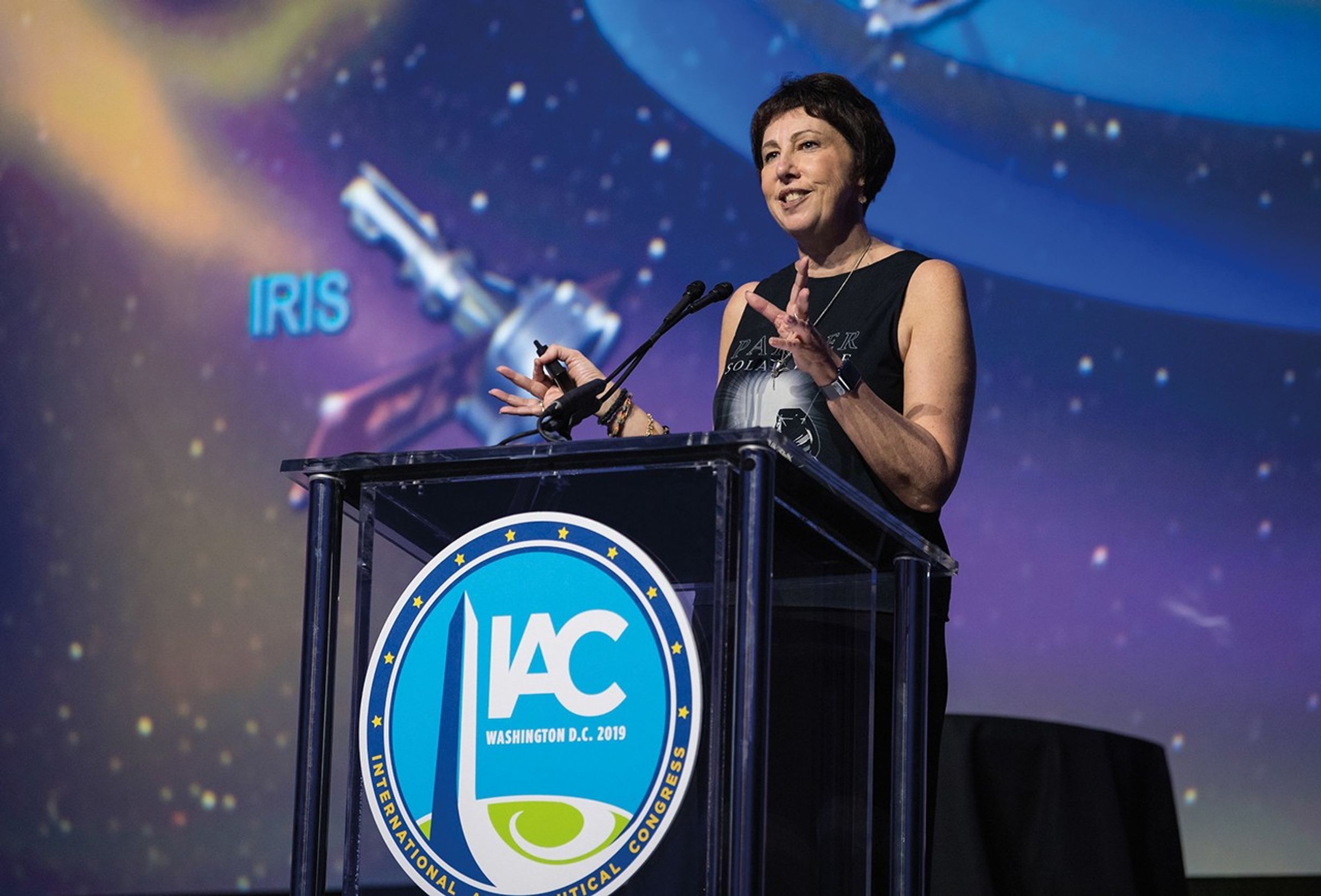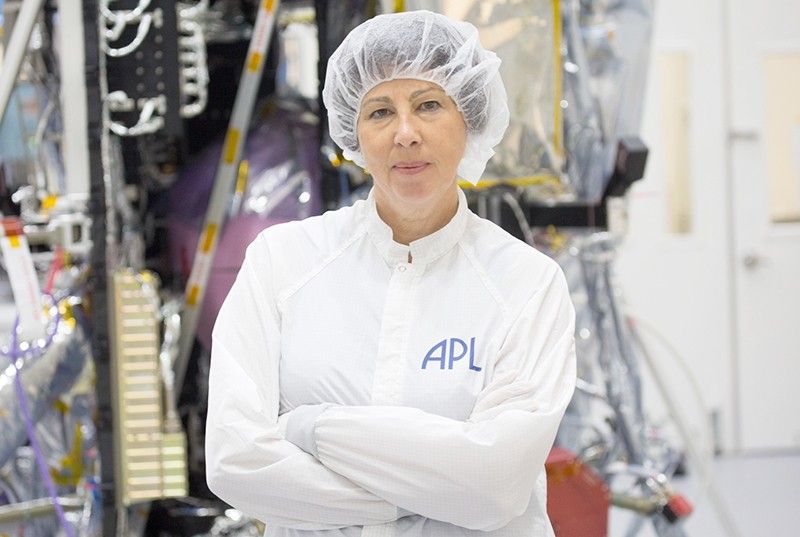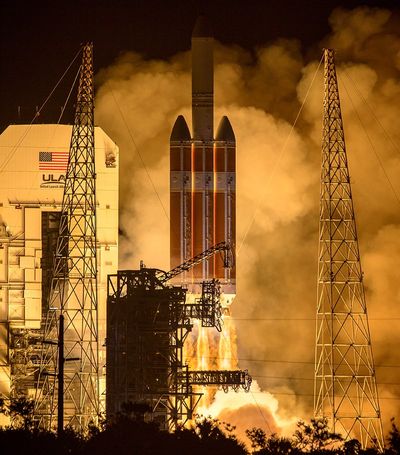
Dr. Nicola Nicky Fox
Associate Administrator (AA), NASA Science Mission Directorate (SMD) - NASA Headquarters
Contents
- Q&A with Dr. Nicola "Nicky" Fox
- Education
- What first sparked your interest in space and science?
- How did you end up working in the space program?
- What do you love about your job?
- What advice you would give to others interested in a similar career?
- What has been your biggest challenge, professional or personal, and how did you overcome it?
- Who inspires you?
- What have been some of your favorite projects to work on?
- What are some fun facts about yourself?
- What is your favorite space image and why?
- Additional Links
As the Associate Administrator (AA) for the Science Mission Directorate, Dr. Nicola Fox directs ~100 NASA missions to explore the secrets of the universe–missions that use the view from space to assess questions as practical as hurricane formation, as enticing as the prospect of lunar resources, as amazing as behavior in weightlessness, and as profound as the origin of the universe. As the AA, Dr. Fox creates a balanced portfolio of carefully chosen missions and research goals to enable a deep scientific understanding of Earth, other planets, the Sun, and the universe. These efforts lay the intellectual foundation for the robotic and human expeditions of the future, while meeting today’s needs for scientific information to address national concerns.
The key to being a scientist is to love asking questions. If you are fascinated about how and why things work – you are already a scientist.

nicola Fox
NASA Associate Administrator
Dr. Fox joined NASA in 2018 as SMD’s Director of the Heliophysics Division, where she led a world-class team in understanding Earth’s most important and life-sustaining star. She oversaw NASA’s work to study key space phenomena and improve situational awareness of the very space our astronauts, satellites, and robotic missions travel through as they explore the solar system and beyond. Her portfolio also included NASA’s robust space weather research to help the U.S. government better predict space weather, which can interfere with radio communications, affect GPS accuracy, and even–when extreme–affect electrical grids on the ground.
Dr. Fox has authored numerous scientific articles and papers, in addition to delivering science presentations worldwide. She is known for her keen ability to make science accessible to a broad range of audiences, as well as her stellar leadership, creating a sense of purpose and belonging in her teams. In 2021 she was awarded the American Astronautical Society’s Carl Sagan Memorial Award for her demonstrated leadership in the field of heliophysics. In 2020 she was awarded NASA’s Outstanding Leadership Medal. In 2024, she received an honorary Doctorate of Science from the University of Hertfordshire and an honorary fellowship of the Royal Astronomical Society.
Prior to August 2018, Dr. Fox worked at the Applied Physics Lab at the Johns Hopkins University, where she was the chief scientist for heliophysics, as well as the project scientist for NASA’s Parker Solar Probe–humanity’s first mission to a star. Dr. Fox’s extensive project, program, and supervisory experience included serving as the Deputy Project Scientist for the Van Allen Probes and the operations scientist for the International Solar Terrestrial Physics program.
Dr. Fox graduated from The Imperial College of Science, Technology and Medicine in London with a B.S. in Physics. She received an M.S. in Telematics and Satellite Communications from the University of Surrey. She then returned to Imperial College to complete a Ph.D. in Space and Atmospheric Physics.
Q&A with Dr. Nicola "Nicky" Fox
Education
St. Francis College
Imperial College of Science, Technology and Medicine: BSc Physics
University of Surrey: MSc Telematics
Imperial College of Science, Technology and Medicine: Ph.D. Space and Atmospheric Physics
What first sparked your interest in space and science?
There was no one thing that first sparked my interest in science, I just always loved it. My father will tell you that it was his actions when I was a baby that gave me my start on a space path. When I was 9 months old, Neil Armstrong first walked on the Moon. This occurred during the night in England. I apparently stirred in my crib so my father propped me up in front of the TV so that I could watch this momentous event. He gave me a running commentary through the entire thing and now takes full credit for my interest in space.
But my interest in science has always been much deeper than one single event – I love the logic of it. There is always a reason why something happens and there are always mysteries to solve.
How did you end up working in the space program?
I honestly regard myself as super lucky to be working in the space program. I was attending a conference in Alaska when I was a graduate student. As most students are apt to do, I was enthusiastically presenting my work during a poster session and a more senior scientist asked me if he could interest me in a job at NASA. This was one of those pivotal moments in life where you know your life is going to change. My father had always said that the best thing you could do in life was to work at NASA. But since England didn’t have a space program, this seemed like a distant pipe dream, like winning an Olympic medal or an Oscar.
So after graduating with my Ph.D., I left the safety of my home environment and set out for the USA. I had accepted a 2-year postdoc at NASA’s Goddard Space Flight Center with the intent to return to England at the end and to work on the European Cluster mission. The mission was lost due to a launch failure and so I stayed in the USA and have never looked back. From Goddard, I moved to the Johns Hopkins University Applied Physics Laboratory where I had the privilege of working on many exciting NASA missions, including most recently Parker Solar Probe.
What do you love about your job?
Every day is different. There are always new challenges to face. I also get to work with hundreds of scientists and engineers, and I love learning new things from them every day. The most satisfying thing about being a scientist is that you are always trying to discover something new, and every now and then, you actually succeed in this.
What advice you would give to others interested in a similar career?
People often think that scientists are really smart and therefore they must have all the answers. But the key to being a scientist is to love asking questions. You don’t need to know everything or to have all the answers but you do need to have a real curiosity and want to know more. If you are fascinated about how and why things work – you are already a scientist. Follow your heart and do what makes you happy.
But NASA is more than a group of scientists. What is so inspiring is how everyone, no matter what their role, is part of the NASA mission. You feel like you are taking part in something so much greater than you. There is a tremendous and rich diversity of roles that are necessary to get a mission into space, and it is an area where all different types of people and jobs come together. If you love space then there’s a career for you at NASA.
What has been your biggest challenge, professional or personal, and how did you overcome it?
Without a doubt, my biggest personal challenge was in 2010 when my husband died very suddenly, leaving me with two children – then 1 and 3 years old. My life completely fell apart. I felt like I was never going to be able to carry on. I had never been good at admitting when I needed help – always wanting to be independent and not looking weak. Events like this one are just not things that you can come back from alone. So I learned that it was OK to need help and that nobody expected me to do everything alone.
I had just joined the Parker Solar Probe team and was fortunate to find myself in this incredibly supportive work environment. Even though I had only been with the mission for a few weeks, the whole team gathered around and supported me through this period. People were determined that I wouldn’t fail and would help in any way – offering to pick up my kids from daycare, to take my car to the shop, to get groceries – whatever I needed to get through those first few months – always with the question “what do you need?”
The challenge for me was to be comfortable accepting these offers of help. Although this is a very extreme example, it did teach me that nobody expects you to do everything alone – the best things in life require a team, and there is nothing better than being a part of an awesome team. Ten years later, I can look back and see all the incredible people that helped our family to thrive and give a silent prayer of thanks to each and every one of them.
Who inspires you?
On a personal level, I am always inspired by people who have dealt with great challenges and somehow managed to use their hardships to lift others. I have known far too many people who have suffered illness or bereavement and used their experience to show others that they can succeed. People who face their future with resilience and grace and never give up no matter what life throws at them.
My parents were the first people to inspire me to follow my dreams and to not be bound by any limitations. Both of them pushed me hard to excel and to believe that I could do whatever I wanted, as long as I worked hard enough.
My NASA family inspires me every day. People who work on NASA missions are highly skilled professionals who are dedicated to their work. When issues arise, they just deal with it – they come up with a plan and they implement it. There is nothing better than working as part of a high-performing team. The missions are fantastic. The technology is great. The science is awesome. But it’s the relationships you make with the people that stay with you for life.
What have been some of your favorite projects to work on?
I have had the privilege of working on many incredible missions during my career, and each holds a special place in my heart. The first mission I worked on was Polar, where I was the operations scientist. This was the first time I was ever given any real responsibility for a mission and I loved it. Working with the mission ops team to recover the spacecraft should anomalies occur, planning the science campaigns for the team, and most importantly, meeting my late husband.
The second mission highlight would be the Van Allen Probes. I started working on this one on Day 1 – from the science definition team all the way through launch and operations.
This was another example of a resilient team that supported one another. We stood together in a conference room at the Marriott in Greenbelt, Maryland, watching in horror as the twin towers fell on September 11, 2001 – which also was the first meeting of the team.
I learned so much about being a project scientist and how important the role is to the success of the mission and the success of the important relationships between the scientists and engineers. It was while working on this mission that my children were born in 2007 and 2009.
But the most important mission for me is Parker Solar Probe. This mission was challenging in every way! Being the project scientist for Parker Solar Probe was an awesome job. My main responsibility was to ensure the scientific integrity of the mission – in other words, make sure the mission returns the necessary information so scientists can answer their questions.
I led a great team of scientists from all over the world and worked with all the engineers to make sure that the mission requirements were met. I absolutely loved learning about all the amazing technology that goes into such a daring mission, sending a spacecraft right into the Sun’s corona where the material is super-heated to about 3 million degrees? WOW!!
Parker Solar Probe was also the first time that NASA had named a mission after someone during their own lifetime. It was a paper that predicted the existence of the solar wind, published in 1958, which inspired scientists to dream of a mission to journey through the Sun’s corona. This paper was published by Eugene Parker – and Gene and his family joined us for the historic launch in 2018.
As I described above, this mission would mark the death of my husband. And so this mission is deeply personal for me. I put my husband’s name on the spacecraft, and my children know that Daddy’s going to orbit the Sun forever.
What are some fun facts about yourself?
I love to travel – not business travel when you barely stay anywhere long enough to see outside conference or hotel rooms – but fun travel where you have time to plan and explore.
My favorite trip was to Tahiti and Bora Bora. I had watched a travel show when I was little about these amazing islands and had grown up wanting to visit them more than anywhere. I enjoyed a lot of the typical tourist activities, but also really enjoyed renting bicycles and riding into the local neighborhoods to meet people and try great food. I also swam with sharks, rays, and other amazing fish in a coral garden.
When not traveling, my favorite thing is to spend time with friends and family. My kids tease me that I have too many “best” friends. Apparently, I am only supposed to have one. Well, I have seven and I love them all – my magnificent seven!
What is your favorite space image and why?
This is my favorite NASA image because it embodies the culmination of 60 years of hopes and dreams and looks forward with hope to a bright future of exploration and science understanding.





























